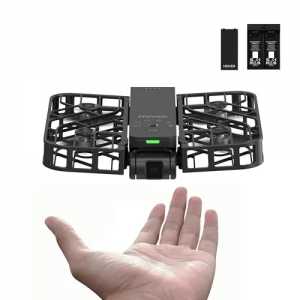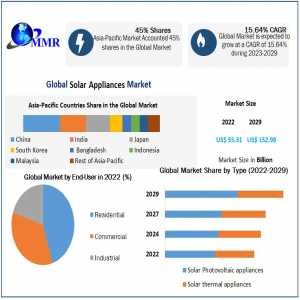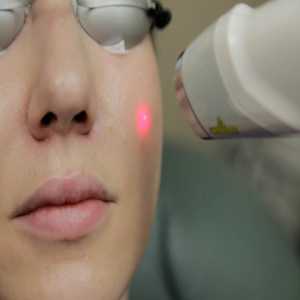
Detecting The Undetectable: The Rise Of The Explosive Trace Detection Market

Introduction
In an age marked by heightened global security threats and increased movement of people and goods, the demand for advanced security technologies has never been greater. Among the most vital tools in this evolving landscape is Explosive Trace Detection (ETD) — a technology that enables the rapid identification of minute explosive residues on surfaces, objects, or individuals.
From international airports and government buildings to cargo ports and border control, ETD systems are quietly playing a pivotal role in safeguarding lives. As threats become more sophisticated, so does the technology — and the explosive trace detection market is rapidly expanding to meet this challenge.
Market Overview
The global explosive trace detection market was valued at approximately USD 1.2 billion in 2025 and is projected to grow at a CAGR of 7–9% through 2031. Key factors fueling this growth include:
- Rising global terrorism threats and public safety concerns
- Stringent security regulations across aviation and transportation sectors
- Growing demand for portable and handheld ETD devices
- Advancements in detection technology, including AI integration and nanotechnology
What Is Explosive Trace Detection?
Explosive Trace Detection (ETD) refers to the process of identifying tiny amounts of explosive material particles — often less than a few nanograms — from surfaces such as luggage, vehicles, or clothing. ETD systems typically work by:
- Collecting samples using swabs or air samples
- Analyzing the sample with detection technologies such as ion mobility spectrometry (IMS), mass spectrometry (MS), or colorimetric sensors
- Identifying threats based on chemical signatures of known explosives like TNT, RDX, PETN, or TATP
Key Application Areas
- Aviation Security
- Airports are the largest adopters of ETD systems for passenger screening and baggage inspection
- Mandatory screening of checked and carry-on luggage in many countries
- Military & Defense
- Used for battlefield forensics, IED detection, and securing perimeters in conflict zones
- Border Security & Customs
- Critical for scanning cargo, vehicles, and shipping containers at ports and border checkpoints
- Public Transportation & Events
- Deployed in train stations, subways, stadiums, and concert venues to prevent mass-casualty events
- Law Enforcement & Critical Infrastructure
- Police departments and private security use handheld ETDs in public and private spaces
Key Market Trends
- Miniaturization & Portability: There is growing demand for handheld ETD devices that are lightweight, rugged, and suitable for field use.
- AI & Machine Learning Integration: Intelligent ETD systems can reduce false positives and improve speed by recognizing complex patterns in chemical signatures.
- Multi-threat Detection: New devices can detect not just explosives, but also narcotics, chemical agents, and hazardous materials — offering multi-functional utility.
- Non-invasive Screening: Touchless and standoff detection technologies are gaining traction, especially in high-traffic areas like airports.
- Increased Funding: Governments across the U.S., Europe, and Asia-Pacific are investing heavily in advanced detection systems for both domestic and international security.
Challenges in the Market
- False Alarms & Sensitivity Balancing: High sensitivity is required to detect traces, but this can lead to frequent false positives if not properly calibrated.
- High Cost of Advanced Systems: Especially for small airports or private operators, the cost of cutting-edge ETD systems can be prohibitive.
- Regulatory and Compliance Pressure: Varying standards across countries and industries can complicate system deployment and certification.
- Training & Maintenance: Effective use of ETD systems depends on trained personnel and regular calibration, creating an ongoing resource demand.
Leading Companies in the ETD Market
- Smiths Detection
- OSI Systems, Inc. (Rapiscan Systems)
- FLIR Systems (Teledyne Technologies)
- Bruker Corporation
- Nuctech Company Limited
- Leidos Holdings, Inc.
- Chemring Group PLC
- Autoclear LLC
These companies are investing heavily in R&D to develop faster, more accurate, and more user-friendly ETD systems that can meet a growing array of global security needs.
The Road Ahead
As threats become more dynamic and covert, explosive trace detection will remain at the front lines of global security strategy. From smart integration with biometric systems to drones equipped with airborne detectors, the future of ETD lies in speed, accuracy, and adaptability.
Moreover, with increased urbanization and large public gatherings becoming more common, civilian applications for ETD are expected to rise — pushing demand even further beyond traditional military or border applications.
Conclusion
The explosive trace detection market is not just growing — it’s evolving. As technology advances and the global security landscape shifts, ETD systems will become more intelligent, portable, and indispensable. Whether it's ensuring the safety of a crowded terminal or protecting critical infrastructure from unseen threats, ETD solutions are now a vital piece of the global security puzzle.
Author Bio
Article Comments
No Comments!
At present there are zero comments on this article.
Why not be the first to make a comment?
Similar Articles
Search Pages
User Upgrade
account to full use of editor,
Including hyperlinks
Article Categories
There are zero sub-categories in this parent category.
There are zero sub-categories in this parent category.

















